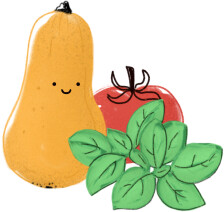Indian banana, three-lobed papaw

Indian banana, three-lobed papaw
Plant family
- others -
Season Overview
Planting
Harvest
Harvest
J
F
M
A
M
J
J
A
S
O
N
D
1ST YEAR
FOLLOWING YEARS
Details
Light requirement
Sunny
Water requirement
Moist
Soil
Medium (loamy)
Nutrient requirement
High
Germination temperature
20 - 25 °C (Degrees Celsius)
Plant distance
30 cm
Row spacing
40 cm
Seeding depth
1 cm
Instructions
Description
The Indian banana / Papau is a real exotic among woody plants! However, (bot.) Asimina triloba is not for impatient gardeners, as the first flowers can only be expected on the plant after around three years. The exotic fruits only develop from them if there is a suitable pollinator nearby. As the plants of this species are dependent on cross-pollination, it is advisable to combine two different varieties. During the flowering period in May, attractive purple bell-shaped flowers appear on this shrub. They are a real eye-catcher with rarity value! The Indian banana / Papau is a must for all garden owners who are looking for something out of the ordinary. The shrub is also known as Pawpaw or three-lobed Papau. It reaches a height of up to 400 cm. The crown of Asimina triloba is narrow and can be kept to a width of around 250 cm with regular pruning. The plant branches out well and produces new shoots of around 30 cm each year. The flowers appear on them before the leaves emerge. When, after a few years in a sheltered and sunny spot in the garden, the time has come for the fruits to form, the joy is great! The fall fruits of the Indian banana / Papau develop from the ovaries, of which each flower contains several. The fruits of Asimina triloba are reminiscent of avocados and have a greenish to yellow-green skin color, they reach a weight of 300 g and a length of 10 cm.
Growing tips
The three-lobed papaw requires a humus-rich soil that should always be sufficiently moist. This plant is also suitable for growing in containers, which makes it easier to overwinter in the first few years. This is because the Indian banana / papau only reaches its excellent winter hardiness of up to around -25 °C when the trunk is sufficiently developed. Young plants of this species are considered frost-sensitive and the gardener must protect them from frost. To its delight, the Pawpaw is generally particularly easy to care for and diseases and pests are hardly known to affect it. A good choice for all lovers of rare woody plants.
Companion Plants
Antagonistic Plants
Diseases
Powdery mildews
Pests
Aphids